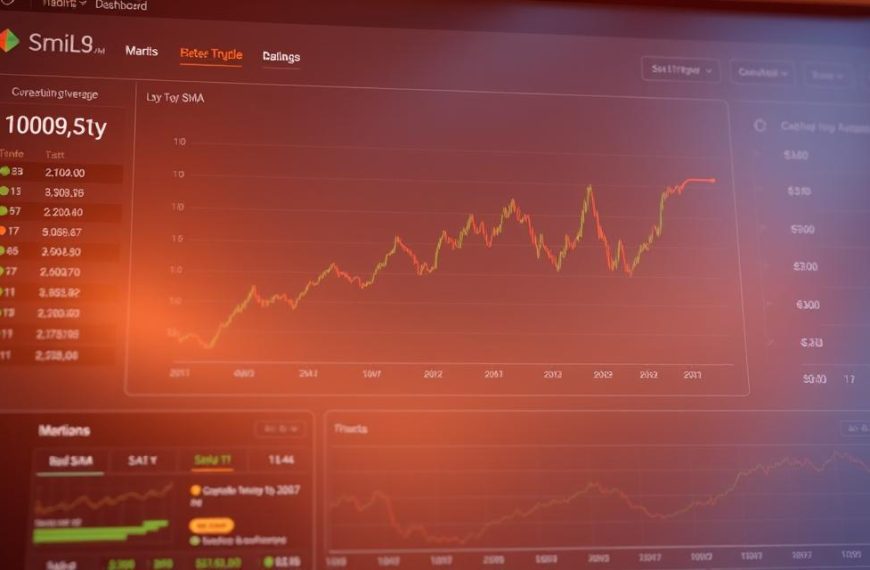Digital assets are transforming global finance, changing how we interact with value. Blockchain technology is the backbone of these innovative currencies and assets1. The total market cap of cryptocurrencies has reached about $2.4 trillion2.
Cryptocurrency offers a new approach to digital finance with decentralised, transparent transactions. Blockchain allows tracking of various assets while reducing risks and costs1. These digital assets now provide fresh opportunities for financial innovation.
Governments and financial institutions are developing frameworks to manage digital assets. In June 2023, the European Commission implemented the Markets in Crypto-Assets (MiCA) regulation2. This move shows growing acceptance of these technologies.
Blockchain forms the foundation of digital assets. Each transaction is recorded as a “block” with essential exchange data1. This enhances security and prevents tampering.
As these technologies advance, they promise to reshape financial systems. They offer unmatched transparency and efficiency in the digital age.
Understanding Digital Assets in the Modern Economy
Digital assets have transformed financial technology. They’ve changed how we view and handle value in the digital era. These innovative instruments offer new ways to invest and transact3.
Cryptocurrencies emerged to address traditional financial system limitations. They’ve challenged existing economic models. Bitcoin’s price rose from about US$30,000 to nearly US$70,000 in 20214.
Key Components of Digital Assets
Digital assets have unique features that set them apart from conventional financial tools:
- Blockchain-based infrastructure
- Cryptographic security mechanisms
- Decentralised finance (DeFi) protocols
- Unique ownership verification systems
The Role of Digital Assets in Finance
Digital assets are introducing innovative transaction methods in finance. They provide new opportunities for global transactions and reduced costs.
These assets also enhance financial inclusivity. They allow for transparent value exchange across borders.
- Cross-border transactions
- Reduced intermediary costs
- Enhanced financial inclusivity
- Transparent value exchange
Blockchain technology underpins these assets with four key features. These include an append-only ledger and cryptographic security. It also involves multi-participant sharing and distributed node networks3.
This infrastructure enables secure, transparent financial interactions. It challenges traditional banking models in numerous ways.
Digital assets represent more than just a technological innovation—they are a fundamental reimagining of value exchange in the digital economy.
Cryptocurrencies face challenges like extreme price volatility. This currently limits their use as stable payment methods3.
However, decentralised finance continues to evolve. It’s pushing the boundaries of digital financial ecosystems every day.
What is Crypto and Blockchain?
Cryptocurrency is a digital financial system operating outside traditional banking. It’s a digital or virtual currency secured by cryptography, with Bitcoin as the pioneer5. This innovative technology has been around since 20095.
Blockchain is the core technology behind cryptocurrencies. It’s a distributed ledger that enables secure, transparent transactions. Blockchain uses a peer-to-peer network without a central database, relying on computers worldwide6.
- Bitcoin was the first digital asset launched in 20096
- Over 10,000 cryptocurrencies currently exist5
- Blockchain allows value transfer without traditional banking intermediaries6
Blockchain revolutionises transaction processing by removing middlemen. Bitcoin’s blockchain processes transactions every 10 minutes7. This is much faster than traditional banking, which can take up to three days7.
There are three main types of cryptocurrencies: cryptocurrencies, crypto commodities, and crypto tokens6. Stablecoins, pegged to stable assets like the U.S. dollar, are gaining popularity in decentralised finance6.
Blockchain’s potential goes beyond finance. It can be used in voting systems, supply chain management, and data verification. This technology promises to transform various industries7.
The Technical Foundation of Blockchain Technology
Blockchain technology revolutionises digital transactions and data management. It uses a sophisticated protocol to transform how digital information is stored and verified8.
Blockchain’s foundation is its unique distributed network structure. Nodes, or computers in various locations, work together to maintain the blockchain’s integrity8.
This peer-to-peer network ensures transparent and decentralised digital transactions.
Block Creation and Verification Process
Blockchain networks use specific consensus mechanisms to create and verify blocks. The two primary methods are:
- Proof of Work
- Proof of Stake8
Cryptographic Techniques in Blockchain
Cryptographic techniques secure blockchain networks using complex mathematical algorithms. These advanced methods serve several purposes:
- Encrypt transaction data
- Verify user identities
- Protect against unauthorized access8
Understanding Distributed Ledger Technology
Distributed ledger technology offers a transparent and secure way to record transactions. Smart contracts are programmable instructions on the blockchain8.
These contracts automatically execute when specific conditions are met.
The blockchain’s growth shows its potential. From 2014 to 2020, the bitcoin blockchain grew from 20 GB to over 200 GB9.
Cryptocurrencies: The First Digital Assets
Digital currency began before Bitcoin’s revolutionary debut. Early experiments in electronic payments paved the way. David Chaum’s eCash in 1990 introduced anonymous digital transactions10.
Bitcoin emerged in 2009, marking a pivotal moment in financial technology11. It introduced peer-to-peer electronic cash without central banks12. Bitcoin’s unique features set it apart.
- Decentralised network structure
- Transparent transaction records
- Limited total supply
The cryptocurrency world expanded rapidly beyond Bitcoin. Thousands of altcoins emerged, each offering unique features11. Ethereum, launched in 2015, became the second most popular digital currency11.
Cryptocurrencies serve as both payment methods and speculative investments. Their value can fluctuate dramatically, making them high-risk, high-reward assets12. Bitcoin’s price has seen significant variations over time12.
Digital currencies are reshaping our understanding of monetary value and financial transactions.
As of October 2023, over 500 cryptocurrency exchanges exist11. This proliferation highlights the growing acceptance and interest in cryptocurrency as a legitimate financial instrument.
Understanding Digital Asset Categories
Digital assets have transformed finance, offering new ways to represent and transfer value. These digital instruments use blockchain technology to create unique financial tools beyond traditional systems13.
The digital asset ecosystem includes various financial instruments with distinct features. These can be grouped into key categories based on their properties and uses14.
Cryptocurrencies and Tokens
Cryptocurrencies are the foundation of blockchain assets. They include Bitcoin and Ethereum, which act as decentralised digital currencies15.
Key features of cryptocurrencies are:
- Decentralised transaction systems
- Peer-to-peer payment mechanisms
- Global accessibility
Non-Fungible Tokens (NFTs)
NFTs allow unique digital ownership of specific items. These tokens represent indivisible and irreplaceable digital assets, from art to virtual property13.
Their key features include:
- Proof of authenticity
- Verifiable ownership
- Potential for value appreciation
Stablecoins and Their Importance
Stablecoins offer stability in the volatile cryptocurrency market. They’re usually pegged to traditional currencies or commodities, providing more predictable value15.
Stablecoins play a vital role in:
- Reducing cryptocurrency market volatility
- Facilitating cross-border transactions
- Providing a bridge between traditional and digital finance
Digital assets continue to transform financial ecosystems, offering unprecedented opportunities for investment and technological innovation.
Blockchain Security and Private Keys
Cryptographic security is the foundation of blockchain technology. It protects digital assets from unauthorised access. Private key management is vital for maintaining blockchain transaction integrity.
Private keys act as digital signatures for cryptocurrency transactions. They are unique 256-bit randomly generated numbers. These keys are usually expressed in a 64-digit hexadecimal format.
Blockchain security uses complex cryptographic principles to safeguard user assets16. This ensures robust protection against potential blockchain vulnerabilities17.
- Cold wallets provide enhanced security through offline storage16
- Custodial wallets involve third-party key management16
- Digital signatures validate transaction integrity16
The cryptocurrency world has faced significant security challenges. Bridge attacks account for 70% of crypto cyber attacks17. The Mt. Gox hack in 2014 showed the importance of strong private key management17.
| Security Approach | Key Characteristics |
|---|---|
| Cold Wallets | Offline storage, reduced hacking risk |
| Hot Wallets | Online storage, more convenient but less secure |
Understanding and implementing sophisticated private key management strategies is essential for protecting digital assets in the evolving blockchain ecosystem.
Digital Asset Storage Solutions
Crypto wallets play a vital role in safeguarding your digital assets. As society moves online, digital assets now include cryptocurrencies, documents, and other valuable items18.
Choosing the right storage solution is crucial for protecting your digital investments. Crypto wallets offer users control over their private keys and access to their digital wealth.
These wallets are the primary method for securing and managing digital assets.
Types of Digital Wallets
Digital asset storage comes in various forms, each with unique characteristics:
- Hardware Wallets: Offline storage devices recommended for secure asset protection18
- Software Wallets: Digital applications for convenient access
- Paper Wallets: Physical documents containing private key information
Security Best Practices
Protecting your digital assets requires implementing robust security measures:
- Create regular backups
- Use strong, unique passwords
- Enable two-factor authentication
- Keep private keys confidential
Cold vs Hot Storage
Understanding cold and hot wallets is crucial for effective crypto wallet management:
| Cold Storage | Hot Wallets |
|---|---|
| Offline storage | Online accessibility |
| Maximum security | Convenient transactions |
| Lower hacking risk18 | Higher vulnerability |
“Secure storage is the foundation of protecting your digital wealth.”
Cybersecurity remains a critical concern for digital wallets. Potential vulnerabilities at wallet endpoints could lead to asset loss18.
Investors can safeguard their digital assets by implementing comprehensive security strategies. This approach ensures the protection of their valuable digital holdings.
The Impact of Digital Assets on Traditional Finance
Digital assets and blockchain are transforming finance. A third of financial institutions have started using crypto strategies. This marks a big change in traditional banking approaches.
Crypto is changing how financial services work. Digital assets offer new ways for institutions to grow. Tokenisation enables fractional ownership of assets like real estate, making investments more accessible.
Cryptocurrencies trade non-stop, unlike traditional markets. Blockchain can cut costs by removing middlemen. Digital assets help wealth managers hedge risks.
- Cryptocurrencies trade 24/7, unlike traditional markets19
- Blockchain technology can reduce transaction costs by eliminating intermediaries20
- Digital assets provide risk hedging mechanisms for wealth managers20
Tokenised assets are set to grow rapidly. Experts predict widespread use within three to five years. Banks are slowly adding digital assets to boost liquidity and efficiency.
| Digital Asset Metric | Current Status |
|---|---|
| Crypto Users Worldwide | Over 300 million21 |
| Institutional Crypto Services | Only 7% currently offering21 |
| Venture Capital Investment | $33 billion in 202121 |
Digital assets face challenges but have a bright future. Rules are changing, with big banks like JP Morgan investing in blockchain. This tech will keep reshaping financial services.
Regulatory Landscape and Government Oversight
Digital assets face increasing regulatory scrutiny worldwide. Governments are creating frameworks to address crypto regulations and ensure financial stability22. Nations have adopted diverse approaches to manage this emerging technological landscape.
Government policies have reshaped the digital asset ecosystem. The US has empowered market regulators like the SEC and CFTC to oversee cryptocurrency activities22. Regulatory compliance is now crucial for blockchain-based businesses.
- The European Union implemented the Markets in Crypto-Assets Regulation (MiCA) to standardise cryptocurrency oversight23
- United Kingdom recognised crypto assets as regulated financial instruments in 202222
- Japan requires crypto exchanges to register with the Financial Services Agency22
Global regulatory approaches are becoming more sophisticated. Countries aim to balance innovation with investor protection. The goal is creating a secure environment for digital asset transactions while preventing financial misconduct23.
Regulatory frameworks are evolving to address the unique challenges posed by decentralised technologies.
A collaborative international approach is emerging for clear crypto regulations. Governments seek comprehensive guidelines to protect consumers. They also aim to foster technological innovation24.
Future Applications of Blockchain Technology
Blockchain technology is set to transform multiple industries with innovative decentralised solutions. Major corporations like JPMorgan Chase, IBM, and Google are investing heavily in this emerging technology25. Blockchain’s potential in reshaping business processes and technological infrastructure is becoming increasingly evident.
Enterprise blockchain solutions are gaining traction in sectors needing secure, transparent transaction systems. About 38% of US workers report widespread use of blockchain in their businesses25. Smart contracts are a groundbreaking application, enabling automated, trustless agreements across various domains.
These digital protocols can streamline complex business interactions efficiently. They have the potential to reduce operational costs and boost productivity26.
Cross-border transactions stand to benefit greatly from blockchain integration. Traditional money remittance costs can reach 20% of transfer amounts. Blockchain technology promises to slash these expenses significantly26.
Blockchain enables real-time transactions, unlike traditional banking systems25. Its guaranteed, rapid transaction processing makes it ideal for international financial exchanges.
Blockchain’s future potential seems limitless. Web3 represents a new internet iteration built on decentralised networks25. Emerging applications showcase blockchain’s versatility in healthcare, supply chain management, governance, and identity verification.
As innovation speeds up, businesses worldwide are recognising blockchain’s transformative capabilities26. The technology’s impact on various sectors continues to grow and evolve.
FAQ
What are digital assets?
How does blockchain technology work?
What is the difference between cryptocurrencies and tokens?
Are digital assets secure?
What are stablecoins?
How are digital assets regulated?
What is decentralised finance (DeFi)?
Can blockchain be used beyond cryptocurrencies?
What are the different types of digital wallets?
What are Non-Fungible Tokens (NFTs)?
Source Links
- https://www.ibm.com/think/topics/blockchain
- https://www.investopedia.com/terms/c/cryptocurrency.asp
- https://www.europarl.europa.eu/RegData/etudes/BRIE/2023/757580/EPRS_BRI(2023)757580_EN.pdf
- https://www.rba.gov.au/education/resources/explainers/cryptocurrencies.html
- https://www.british-business-bank.co.uk/business-guidance/guidance-articles/finance/what-is-cryptocurrency-and-blockchain-technology
- https://guides.loc.gov/fintech/21st-century/cryptocurrency-blockchain
- https://www.investopedia.com/terms/b/blockchain.asp
- https://tezos.com/blockchain/
- https://en.wikipedia.org/wiki/Blockchain
- https://www.investopedia.com/tech/were-there-cryptocurrencies-bitcoin/
- https://www.kaspersky.com/resource-center/definitions/what-is-cryptocurrency
- https://www.bankofengland.co.uk/explainers/what-are-cryptocurrencies
- https://www.investopedia.com/terms/d/digital-asset-framework.asp
- https://www.pwc.com/us/en/tech-effect/emerging-tech/understanding-cryptocurrency-digital-assets.html
- https://www.gemini.com/cryptopedia/what-are-digital-assets
- https://www.investopedia.com/terms/p/private-key.asp
- https://www.chainalysis.com/blog/blockchain-security/
- https://www.schellman.com/blog/crypto-and-blockchain/what-is-a-digital-asset
- https://www.thetradenews.com/digital-assets-and-traditional-finance-can-two-parallel-lanes-converge/
- https://www.hubbis.com/article/the-intersection-of-traditional-finance-and-digital-assets-your-next-move-forward
- https://www.broadridge.com/resource/capital-markets/the-digital-asset-revolution-preparing-for-the-next-generation-of-financial-markets
- https://www.investopedia.com/cryptocurrency-regulations-around-the-world-5202122
- https://dig.watch/updates/the-global-regulatory-landscape-of-crypto-between-innovation-and-control
- https://digital-strategy.ec.europa.eu/en/policies/regulatory-framework-blockchain
- https://www.emarketer.com/learningcenter/guides/blockchain-technology-applications-use-cases/
- https://www.investopedia.com/tech/forget-bitcoin-blockchain-future/
















